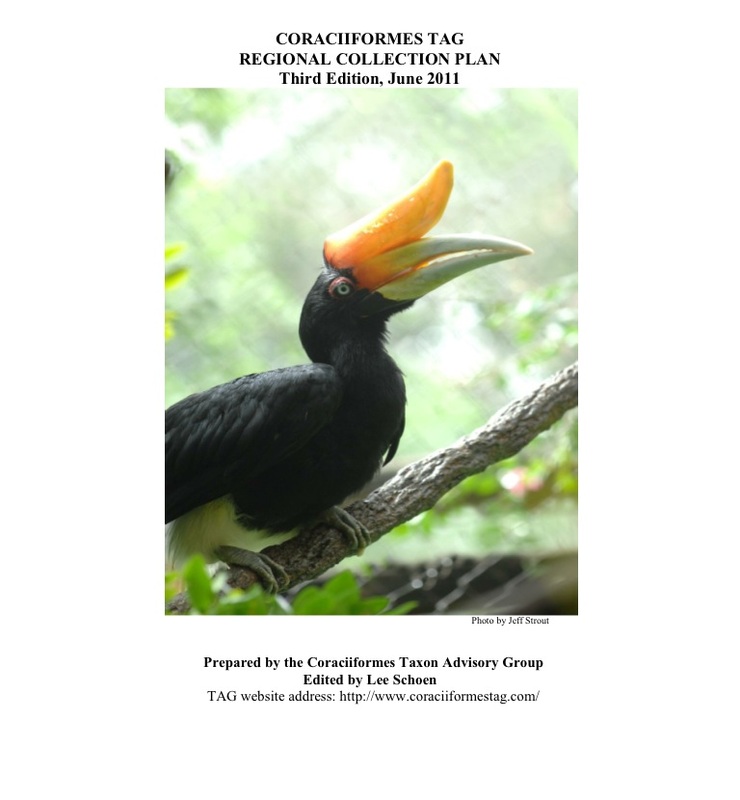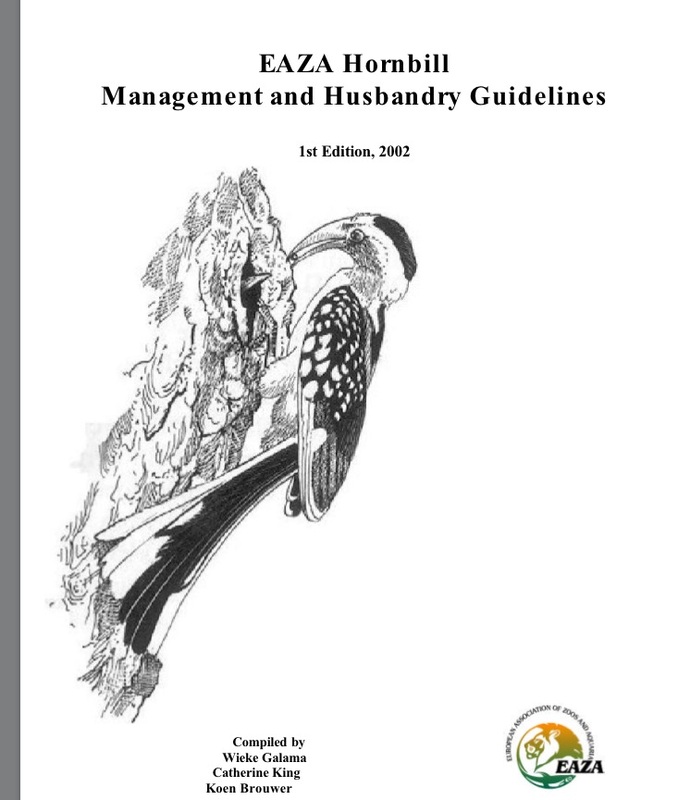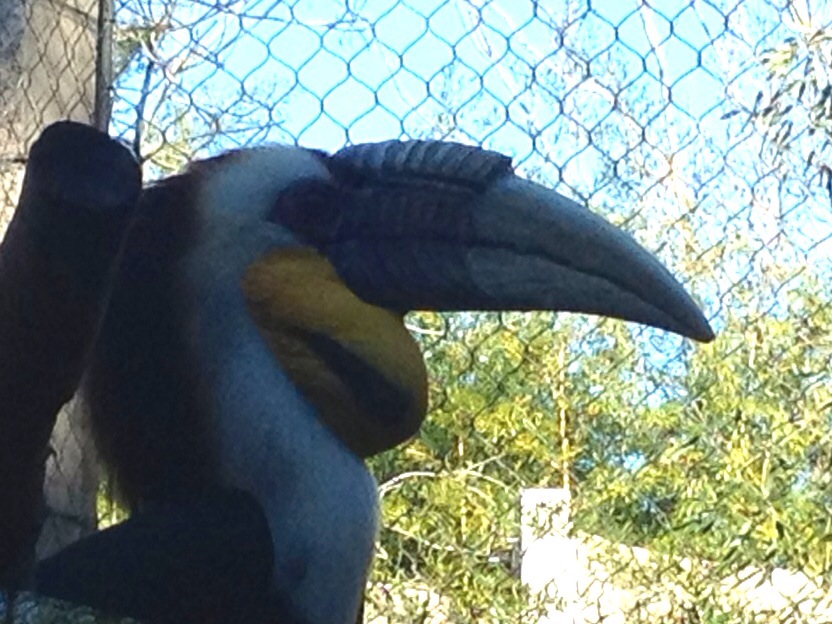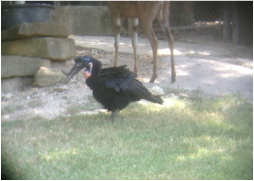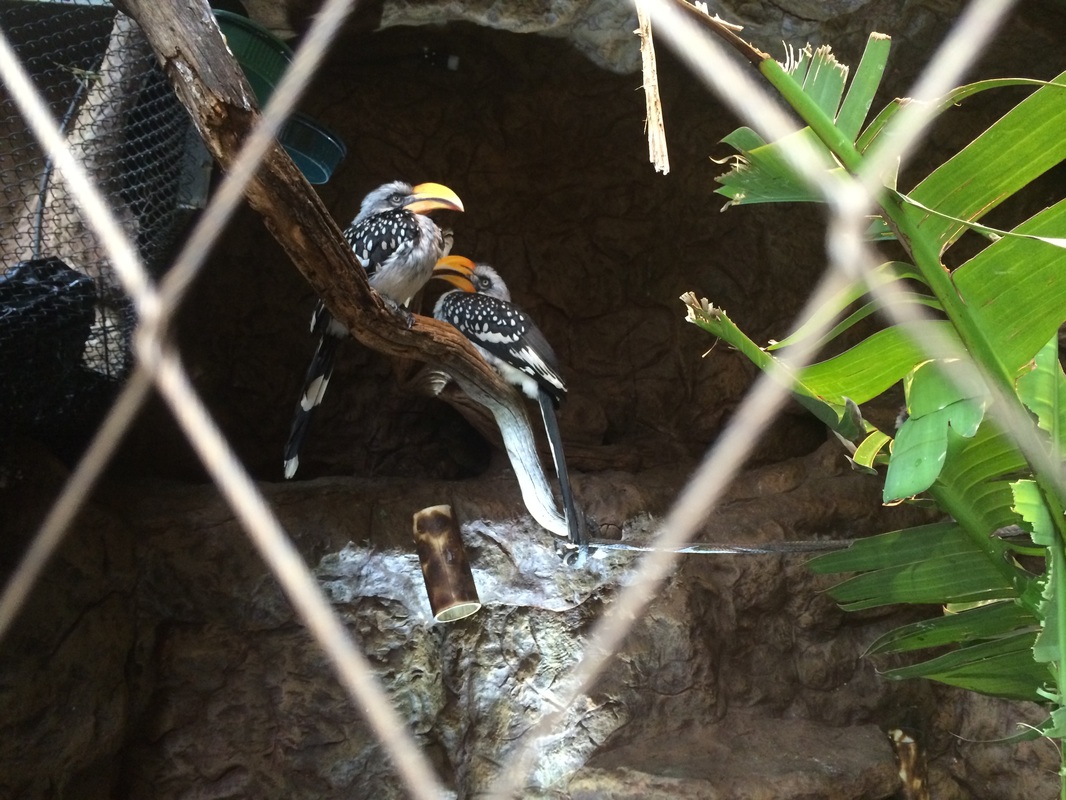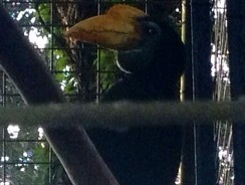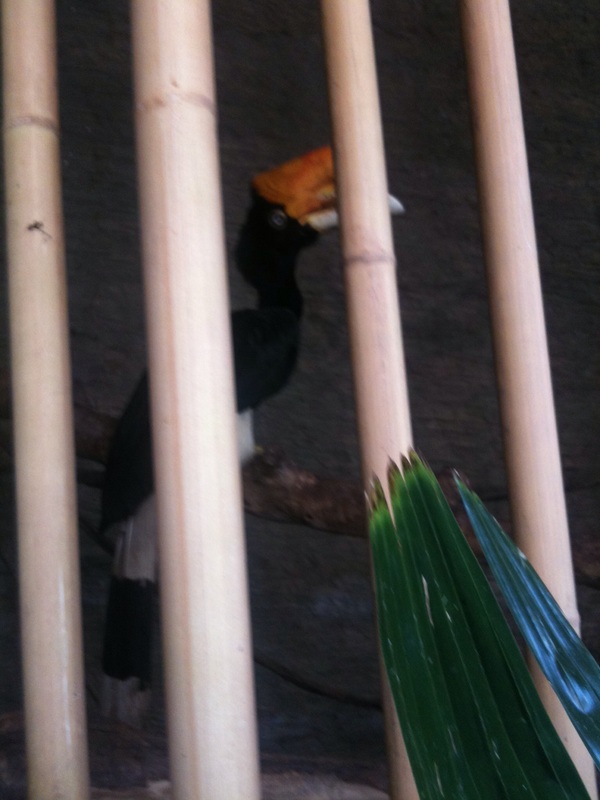Bucerotidae- Hornbills
The family Bucerotidae is a group of near- passerine birds that are restricted to the Eastern Hemisphere. Commonly called hornbills this family's exact taxonomic placement is still being debated. Historically this family has been placed in the order Coraciiformes with the kingfishers , toadies and motmots. However in the recent Sibley-Ahlquist classification has the hornbills in their own order named Bucerotiiformes.
There are 55 species of hornbills living today in Africa and Asia. There name comes from the large downward cuved bill which has a casque on top of it. In all but one species this casque is hollow. In some species the casque is almost imperceptible while in others it is quite ornate. The bill is used in preening, fighting and nest constructing. While the larger casque is used as a resonator for vocalizations. The first two cervicle vertebrae (axis and atlas) are fused to support the heavy bill.
Hornbills are also known for their nests. Females sometimes with help from the male will close up the opening to the cavity where she is nesting. The result is just a small opening through which the male feeds the female and eventually chicks. While sitting on the eggs the female will go through a complete molt.
There are 55 species of hornbills living today in Africa and Asia. There name comes from the large downward cuved bill which has a casque on top of it. In all but one species this casque is hollow. In some species the casque is almost imperceptible while in others it is quite ornate. The bill is used in preening, fighting and nest constructing. While the larger casque is used as a resonator for vocalizations. The first two cervicle vertebrae (axis and atlas) are fused to support the heavy bill.
Hornbills are also known for their nests. Females sometimes with help from the male will close up the opening to the cavity where she is nesting. The result is just a small opening through which the male feeds the female and eventually chicks. While sitting on the eggs the female will go through a complete molt.

